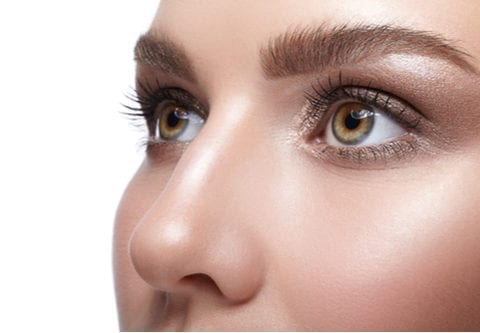3 Ways To Improve Your Recovery After Rhinoplasty
Rhinoplasty Post-Op Care
The decision to undergo a rhinoplasty is a major decision, one filled with anxiety. This is understandable. After all, you’re about to have one of the most defining features of your face—your nose—cut on. You want to be sure your surgery goes well and that you heal quickly. What many patients worry about is the postoperative recovery. A rhinoplasty is one of the most challenging surgeries performed. The surgery is very precise, with many details that must be accounted for to consistently achieve a natural attractive look, while maintaining the primary function of nasal airway patency. But even after a successful surgery, proper postoperative care of your nose is very important to ensure you have a good outcome. Here are three ways to maximize your recovery after a rhinoplasty.
Don’t Dry Out
First, it’s very important to keep your nose moist and take proper care of your incision (if you have an open rhinoplasty). Your surgeon will provide you with nasal saline irrigations (common trade names include Ocean Spray, Deep Sea). You can’t overdose on saline, and I recommend my patients spray their nose as many times as they can a day—three times a day is minimum. The reason is the nasal mucosa needs moisture to heal. Keeping the nose moist is a cornerstone of good postoperative care for any surgery that involves the nose. You should realize there are internal incisions and sutures in a rhinoplasty. The surgery basically traumatizes the nose and it will respond with swelling and crusting. Keeping the nose moist will minimize the crusts and speed up the resolution of the edema or swelling. In addition to moisture, it’s also important to practice good wound care for your external incision. Many rhinoplasties are performed via an open approach, which requires an external incision. Although the exposure is outstanding and allows greater accuracy in interventions, it does result in an external scar. Fortunately, these scars heal extremely well; when healed the scars are almost invisible. It’s normal for the wound to ooze the first few days. The blood will dry and scab. Good wound care means cleaning these crusts with hydrogen peroxide at least twice a day and covering the wound with an antibiotic ointment. The easiest way to clean is to soak q-tips with hydrogen peroxide and gently dab the crusts until they dissolve. Typically, this needs to be done for the first few days only because many patients don’t have crusting at around day 5 after surgery.
Minimize Swelling
Second, it’s crucial to minimize swelling after surgery by avoiding any vigorous activity for two weeks after surgery. Any surgical procedure will cause swelling. Many rhinoplasties in the world today are performed via an open approach. Though the advantage is excellent exposure and improved accuracy, it does result in more swelling than a rhinoplasty performed via a closed approach (no external incision). To keep the swelling down, you should avoid lifting anything over 15 to 20 pounds. Exercises such as jogging, swimming, doing pushups and sit-ups, etc should all be avoided during this time. Besides increasing and prolonging your swelling, these activities also increase the risk of bleeding. Postoperative oozing is common in the first few days after surgery and is not serious. However, strenuous activity can cause significant bleeding. If you develop severe enough bleeding, this may become an emergency. Treatment will often require the nose to be packed. This can potentially disrupt the nasal structures, possibly even hurting the results of your surgery. However, avoiding strenuous activity doesn’t mean lying in bed all day either. This can be bad too. I recommend patients do light daily activities. Walking around the house, watching TV, working on the computer, etc all are safe.
Ice For Bruising
Third and finally, ice is important the first 24 to 48 hours after surgery to minimize the bruising. This is particularly important if osteotomies (or cuts to nasal bones) were performed. Many patients will become black and blue around the eyes. Icing and elevating the head of bed can minimize this. After 48 hours, ice is no longer needed and is not helping your recovery. You can use simple frozen peas in bags. Another useful trick is to put ice cubes in the fingers of a glove and tie off the opening. Then lay the glove fingers across your eyes, straddling your nose.
A Successful Post-Op
The postoperative care after a rhinoplasty is not that challenging. These are all simple things you can do to improve your recovery and ensure you get a great outcome from your surgery. You should also realize, for the vast majority of patients, there is not much pain after surgery. Many of my patients describe an uncomfortable soreness or pressure, all which are easily controlled with standard pain medications.
Dr. Kenneth Yu Facial Plastic and Reconstructive Surgery is a qualified team of experts serving the San Antonio, Texas area. To schedule a consultation, please contact us or call our Concierge Patient Coordinator at 210-876-6868


